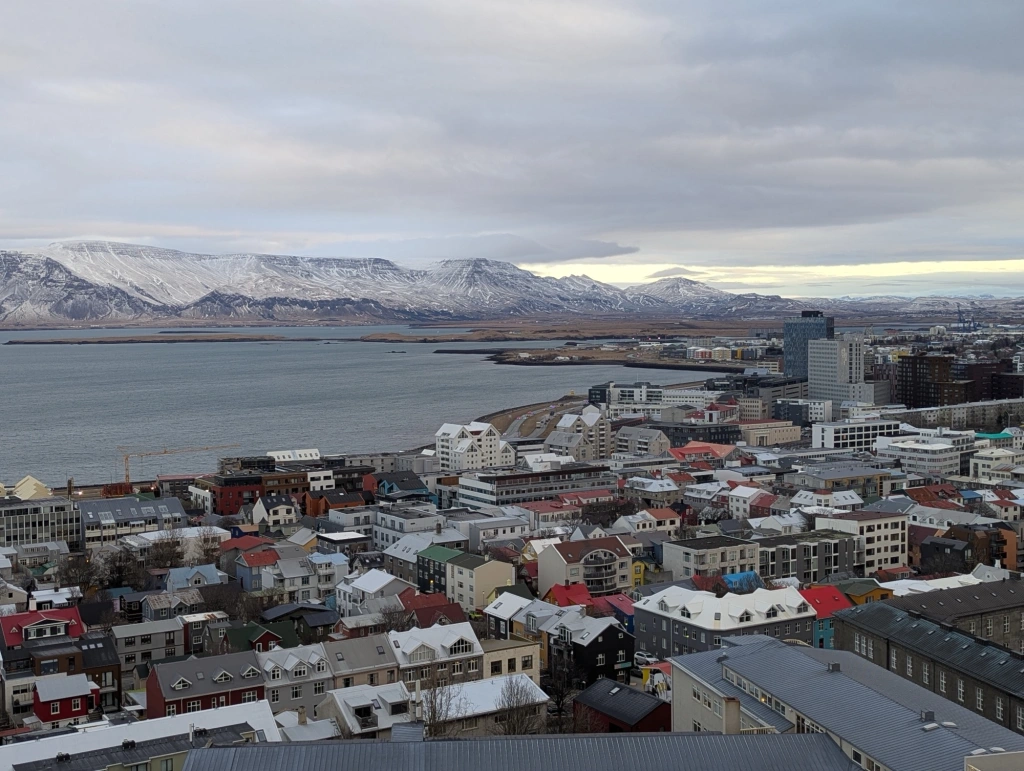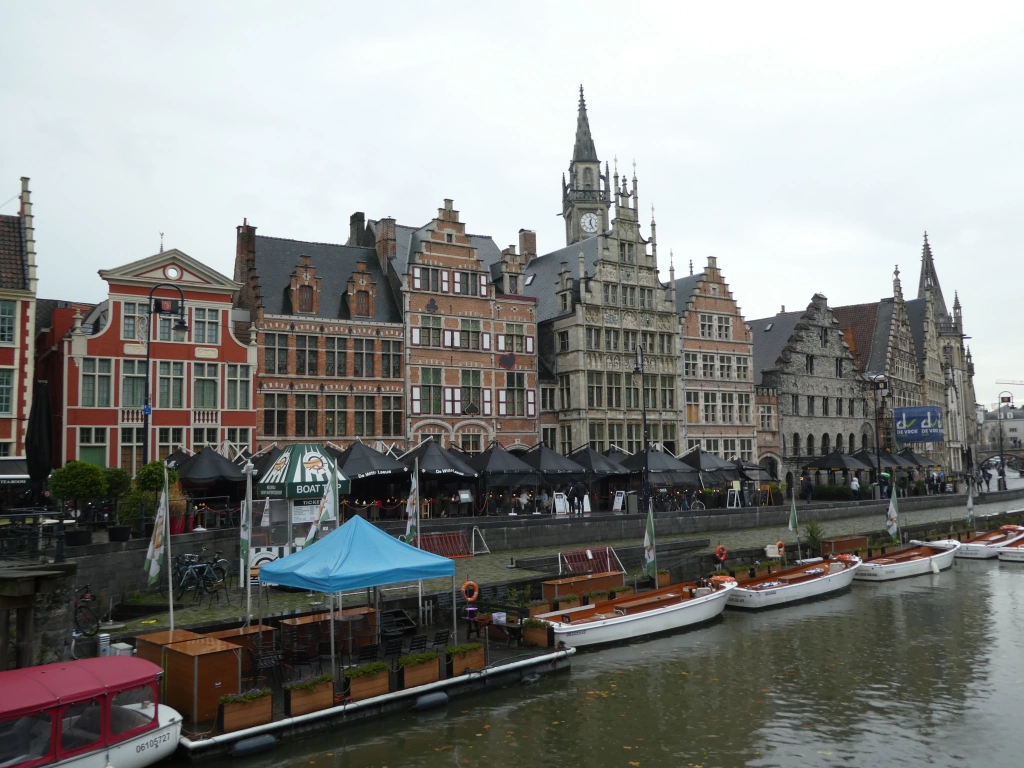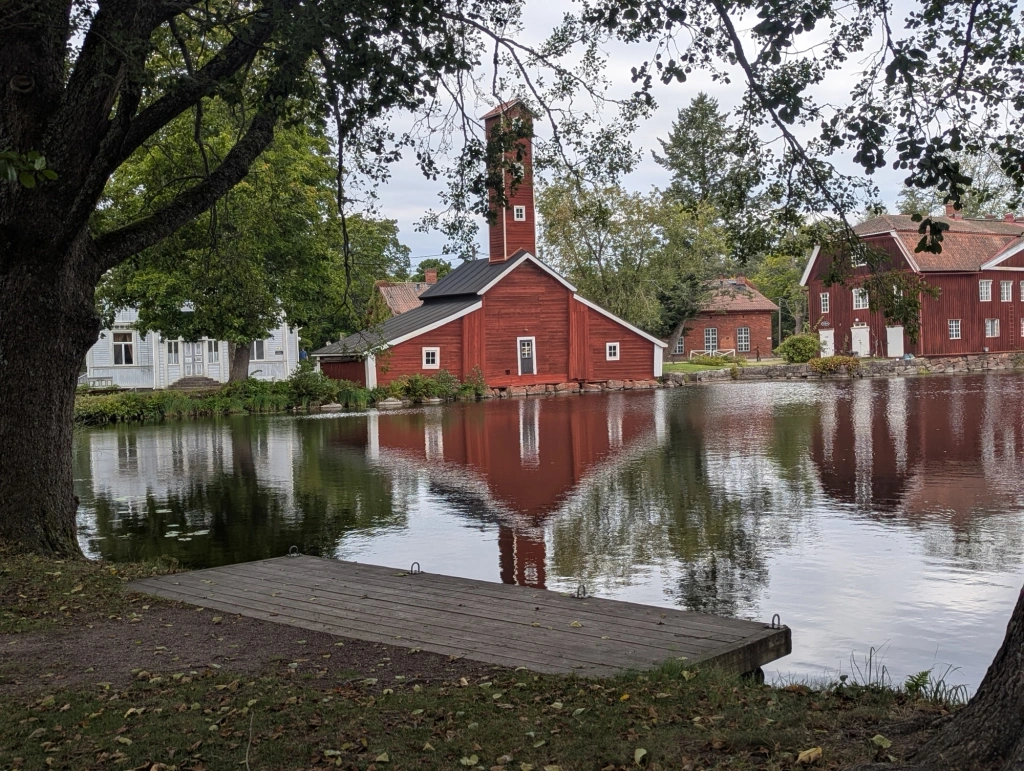After a good night’s sleep in our comfortable bed at the Ibis Styles Wroclaw Centrum, we enjoyed a relaxing breakfast in the hotel’s restaurant. Continuing with the Alice in Wonderland theme, upturned wooden tables hang from the ceiling and furnishings include a checkerboard floor and playing card motifs on the walls. We discovered a plentiful choice of items on the buffet to set us up nicely for the day ahead.
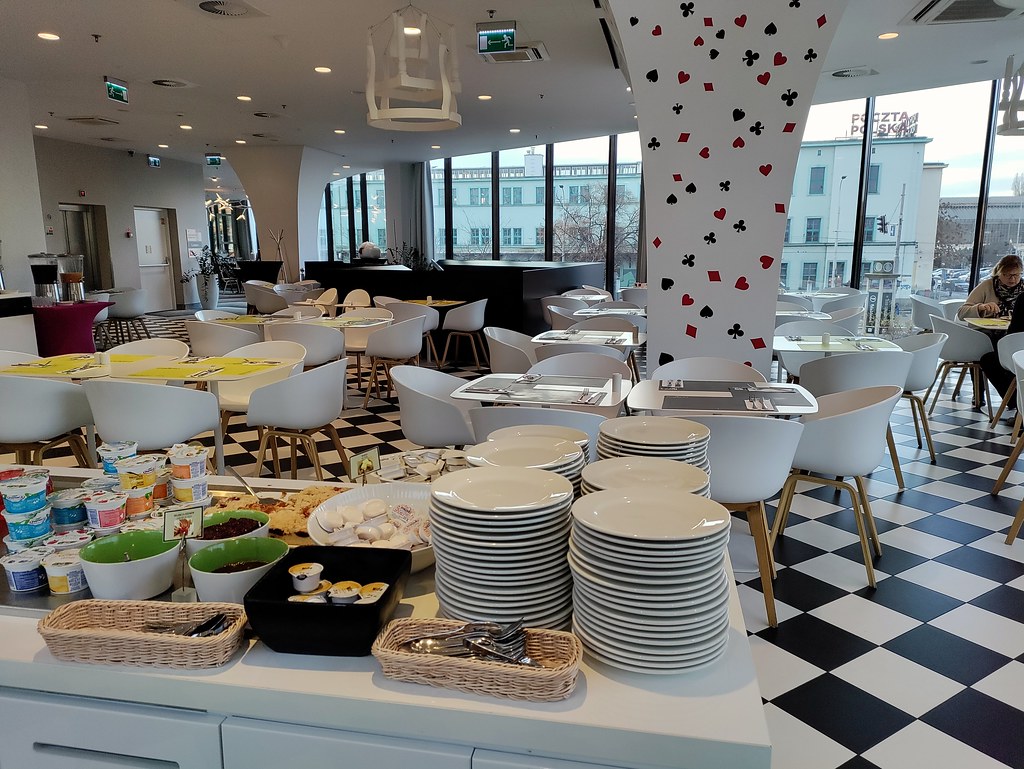
Setting off, first on our list for the day was a visit to the Centrum Historii Zajezdnia located in the south west of the city. It’s easy to reach by Trams 5 or 11 from the central railway station taking 20 minutes. Standard admission 10zl (£1.89).
This museum details the complex history of Wroclaw after the Second World War. The exhibition space is housed in an old bus depot which has been transformed into two large floors of galleries. The city’s turbulent past is brought to life through the use of interactive displays, videos and information panels with all signage available in both Polish and English.
Here we found recreated historical settings which lead visitors through major events in Polish history. The re-building and re-populating of the city is well covered as are the periods of communism, martial law and the story of the Solidarity movement which started at the Gdańsk shipyards and soon spread throughout the country. Allow a minimum of 90 minutes to view all exhibits of this very interesting museum.
On leaving there we caught a tram to the Old Jewish Cemetery located not far away. Established in 1856 and covering a huge site, it fell into disrepair and in 1945 saw fierce fighting as evidenced by bullet holes in several of its gravestones. Preservation began in the 1970’s and in 1991 it opened as the Museum of Jewish Cemetery. We wandered along old stone paths between monumental headstones of all shapes and sizes. The first burial took place here in 1856 and the cemetery continues to be used to this day.
An information board close to the entrance gates lists names of many notable figures who are buried there including the renowned biologist Ferdinand Cohn and historian Heinrich Graetz. A couple of gardeners were tending the cemetery whilst we were there, sweeping up leaves and tidying round. I think we would have spent more time there if the weather had been better but it was an interesting historic sight nonetheless.
On feeling the need to warm up we decided to have lunch at the cosy Bułka z Masłem where we each enjoyed a steaming bowl of mushroom soup and a glass of beer.
The Museum of Games and Computers was within walking distance so we called in there next. Standard admission 30zl (£5.66). The museum is quite small but contains a large collection of over 50 arcade games on old computers and games consoles from the 1970’s to the 1990’s. Most of them were turned on enabling visitors to play on them.
There were some that we had never heard of whilst other games brought memories flooding back of the fun we had in the early days of PC gaming with games and consoles we’d once owned. It would have been helpful if there had been a card affixed to each game with instructions in English on how to play as we couldn’t work out what to do on some of them. It was a fun way though to spend an hour or so especially as it wasn’t busy.
From there, we caught a tram over to the Museum of Illusions 50zl (£9.43). A few years ago I visited the Illusions Museum in Vilnius and enjoyed it so much that when I discovered there was also one in Wrocław, I knew instantly that I wanted to go there.
There are over 70 illusions, 3D images, kaleidoscopes, holograms and distorted mirrors to investigate and we were totally captivated spending lots of time trying to work out what each one did. There were plenty of friendly staff on hand who were very helpful and after giving us an opportunity to figure things out for ourselves, they came over and demonstrated the illusion for us.
We were enthralled by the chair illusion. The seat of the chair was separated from its frame with the idea of this illusion being to explore the laws of perception. The result was a tiny version of my son crouched on the assembled chair with a normal sized me standing next to him. The idea behind the illusion is that it teaches us that it’s easier to perceive why our eyes see things which our brain can’t understand.
Another favourite was the rotated room. As you can see from the photo I appear to be hanging upside down from the ceiling. In reality I’m holding onto an upturned door with the bedroom furniture attached to the ceiling. After the photo had been taken it just needed inverting to create the illusion. There was lots more to explore including a shadow making room and pictures that appeared to protrude out into the room. The tricks taught us about vision, perception and science making it a superb museum for all ages.
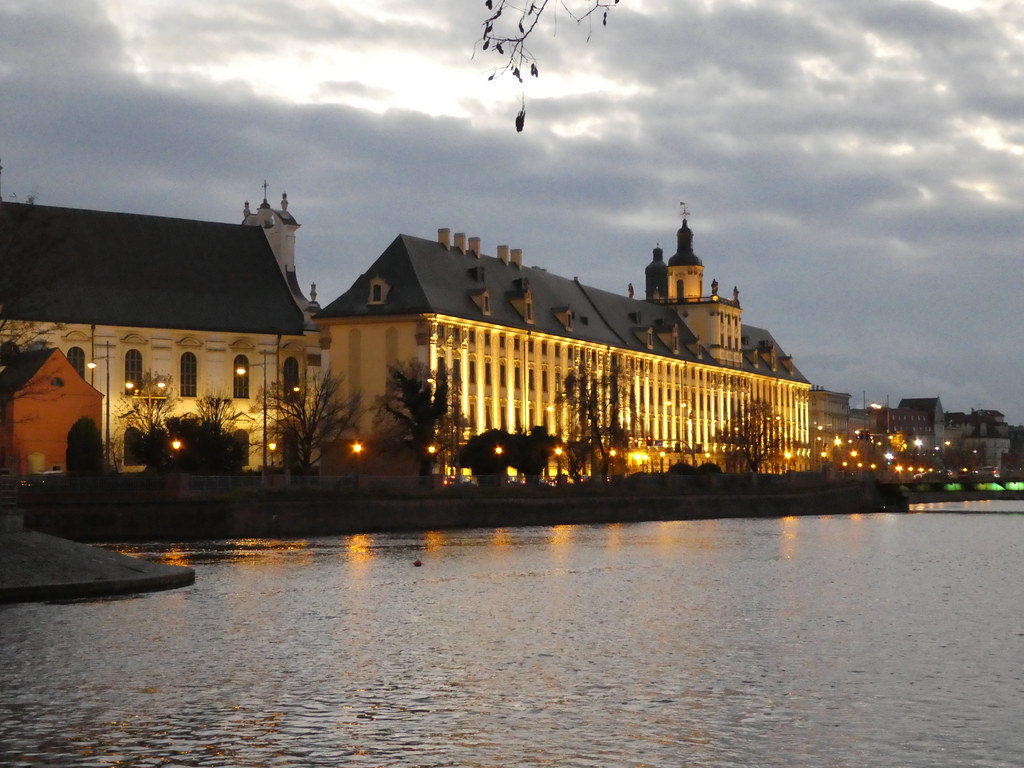
Darkness had fallen by the time we were leaving the museum and the views across to the University Library on Cathedral Island were absolutely beautiful. We didn’t manage to catch a glimpse of the lamplighter who comes out each evening wearing a cloak and a top hat to light each of the 103 gas lit street lamps. Under his cloak he carries a long pole with which he ignites the lamps and then extinguishes them the next morning. Wroc?aw is one of only two cities in Europe to continue with this tradition along with Brest in Belarus. Hopefully on a return visit to Wroclaw we can time our visit to the island better to track him down.
After a rest back in our hotel we decided to return to the Christmas market and eat there. Wandering the stalls we feasted on delicious local sausage served with bread and warm pierogi (dumplings).
We then settled down in one of the cosy wooden cabins for warming glasses of mulled wine. I prefer the traditional red whilst my son prefers the white wine version which we don’t find very often.

